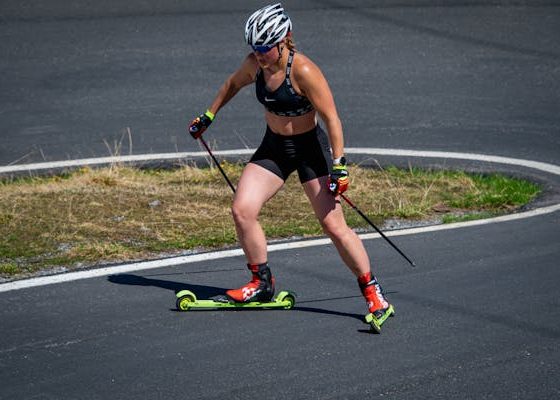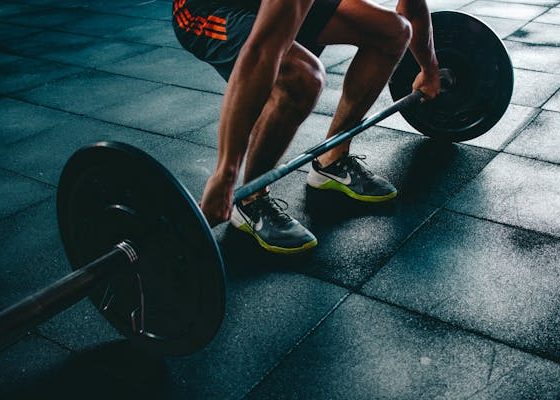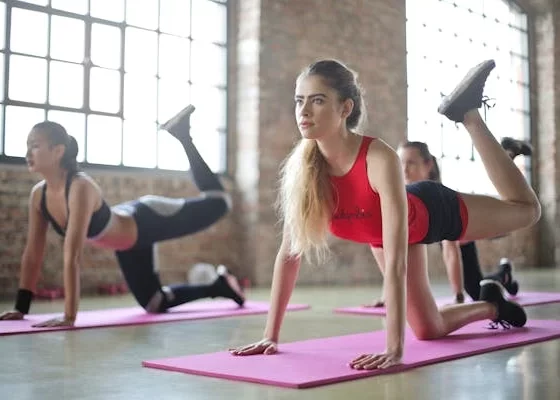If you’re tired of the same old gym routine, it’s time to hit the water! Getting fit in the pool or at the beach can mean a whole lot more than just swimming laps. Check out these five top water sports, a peek at their calorie-busting and body-toning benefits, and how to get started.
Stand-Up Paddleboarding
Stand-up paddleboarding is all the rage, and for good reason. The thrill of gliding across the water never gets old, and your stand-up paddleboard (or SUP) makes a great platform for fishing, swimming and diving. You can cover some serious miles on a SUP, or for extra thrills try riding waves (in which case it then is called stand-up paddle surfing).
Benefits
Shape reports that on average, stand-up paddleboarding burns 250 to 350 calories per half-hour. You’ll get a fierce core workout from balancing on the board, and a great back, shoulder and arm workout from paddling.
The Basics
Have someone hold the board steady as you get on, or place one hand on each edge, near the middle, and step onto it in shallow water. Start paddling from a kneeling position; as you get a feel for it, try standing up.
Surfing
Surfing gave rise to stand-up paddleboarding — but when the breakers are rolling there’s just no beating the original thing. Choose a low-key beach for your first lessons so you won’t have to stress about rogue waves or jockeying for position.
Benefits
Sparkpeople reports that a 185-pound person burns 261 calories in 30 minutes of surfing. You’ll also get a great full-body workout: core and lower body while balancing on the board, plus chest, back, shoulders and arms from paddling out to the waves.
The Basics
Practice standing up on the beach first so that you can perform the movements smoothly once you hit the water. First press your upper body up, then hop your legs forward and plant one foot on the midpoint of your board, the other near to the tail. Stand up partway, keeping your knees bent for balance.
Kayaking
Kayaks might look unstable, but once you learn the basics they’re some of the most versatile and stable watercraft out there. Kayaks can take you for multi-day trips on the ocean, calm lake paddles, or for adrenaline-pumping adventures on whitewater. Just make sure you have the right kind of the boat for the trip you have in mind.
Benefits
Nutristrategy estimates that a 180-pound person will burn about 205 calories in 30 minutes of kayaking. You can also look forward to a great upper-body and core workout, especially your obliques.
The Basics
Sit up straight and let your core do the work of balancing your body in the kayak. Keep your arms in the “kayaker’s box” – arms bent at about 90 degrees when you hold your paddle level in front of you – as you power each twisting stroke with your obliques.
Water Skiing
If you’re looking for a speedy adrenaline thrill, grab onto a rope on the back of a boat and go water skiing. Some waterparks have eliminated the boats traditionally used to pull water skiers and instead use cables to zip you across the water. If you’d rather ride sideways, you can get the same thrill from wakeboarding with both feet planted on one board, just like snowboarding.
Benefits
Harvard Health Publications says that a 185-pound person will burn about 266 calories in 30 minutes of water skiing. You can also look forward to a great core and back workout as you hold onto the rope and balance on your skis or wakeboard.
The Basics
Start submerged in the water, squatting with your weight toward the back of your skis, arms extended straight out in front of you. Stand partway up as the boat (or cable) pulls you up and out of the water, keeping your arms straight and your knees bent for balance.
Water Polo
If you’re into team sports, try one of the fastest, most challenging water sports in existence: water polo. Competitive water polo games can be fast, tough and aggressive – but recreational games are usually a little more laid back and lots of fun.
Benefits
According to My Fitness Pal, a 185-pound person can burn an amazing 340 calories per half hour while playing water polo. Add in an amazing whole-body and cardiovascular workout as you race to get the ball or block your opponents, and this super-intense water sport is hard to beat.
The Basics
Think of water polo like soccer in the pool; the goal is to get the ball all the way into the goal. You can swim with the ball or throw it to a teammate. Goalkeepers cannot cross the midpoint of the pool, and offensive players can’t get closer than 2 meters to the goal unless they’re in possession of the ball.
Aquatic Benefits
No matter which water sport you choose, they all pack a number of similar benefits: great calorie burns, an impact-free cardiovascular workout, and – most important of all – tons of fun. After all, the very best workouts are the ones you enjoy.




